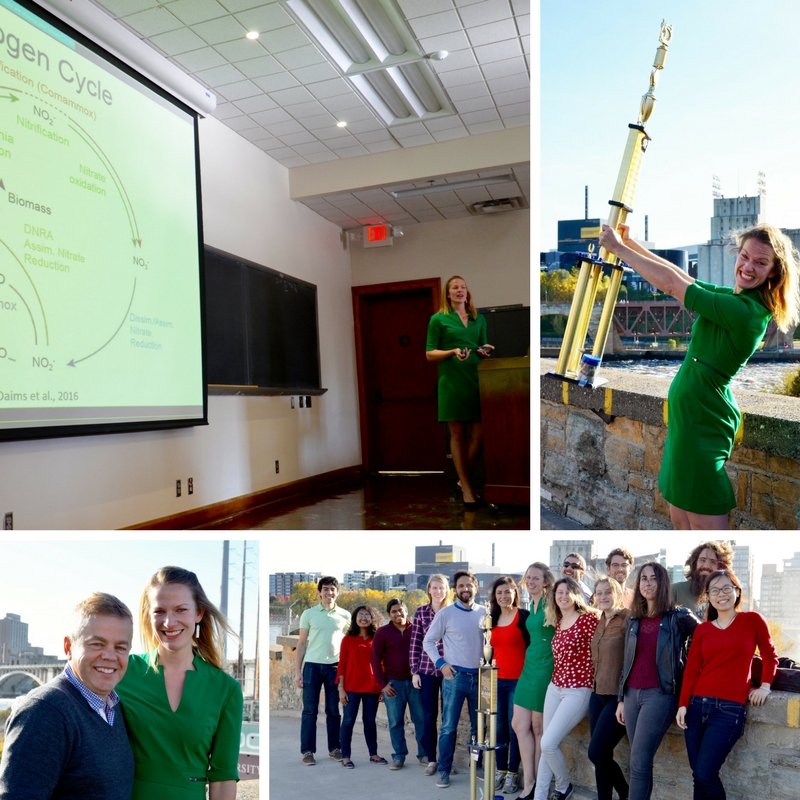Abigail Tomasek Defends PhD, "Denitrification in Agricultural Surface Waters: Quantifying the Effect of Environmental Parameters and Hydrologic Connectivity on Nitrate Uptake and Microbial Communities"

Ph.D candidate Abigail Tomasek successfully defended her Ph.D in Civil, Environmental, and Geo-Engineering on October 19th, 2017. She is advised by Professor Miki Hondzo of the St. Anthony Falls Laboratory and Department of Civil, Environmental, and Geo-Engineering. Congratulations Dr. Tomasek!
Denitrification in Agricultural Surface Waters: Quantifying the Effect of Environmental Parameters and Hydrologic Connectivity on Nitrate Uptake and Microbial Communities
Abigail Tomasek, PhD Candidate in Civil, Environmental, and Geo-Engineering
Advisor: Miki Hondzo, Department of Civil, Environmental and Geo-Engineering and St. Anthony Falls Laboratory, University of Minnesota
The development of synthetic fertilizer has led to increases in crop yields and allowed for global population growth over the past century. However, this increase in reactive nitrogen has greatly altered the global nitrogen cycle, including increased nitrate loading to surface water and groundwater in the Midwestern United States, with negative effects on human health and aquatic ecosystems. Therefore, there is a need for effective management strategies and an understanding of the mechanisms for nitrate transport and uptake. Denitrification, the microbiological reduction of nitrate to nitrogen gas, can be viewed as a net sink for reactive nitrogen in aquatic systems. Small areas, termed hot spots, and short time periods, termed hot moments, frequently account for a large portion of denitrification. This research focuses on identifying the environmental parameters and hydrologic regimes that promote denitrification, along with determining how parameters, denitrification rates, and microbiological communities are related at different temporal and spatial scales. At the finest scale, a recirculating laboratory flume was used to determine the effect of turbulence and organic carbon on denitrification rates and the microbial community. An outdoor experimental stream and flow-through basin in the Outdoor StreamLab at the St. Anthony Falls Laboratory (SAFL) were used to determine the effect of short-term inundation and periodic inundation on denitrification. At the largest scale, water and sediment samples were collected over two years from a field site in an agricultural watershed in Southern Minnesota. The objectives of this research were to: (1) determine how turbulence and organic carbon affect denitrification, (2) investigate how inundation and hydrologic connectivity leads to the formation of denitrification hot spots and hot moments, (3) develop and evaluate functional relationships between environmental parameters and denitrification rates, and (4) identify how denitrifying gene abundances, denitrification rates, and environmental parameters are related across a hydrologic gradient from channels to riparian areas.
